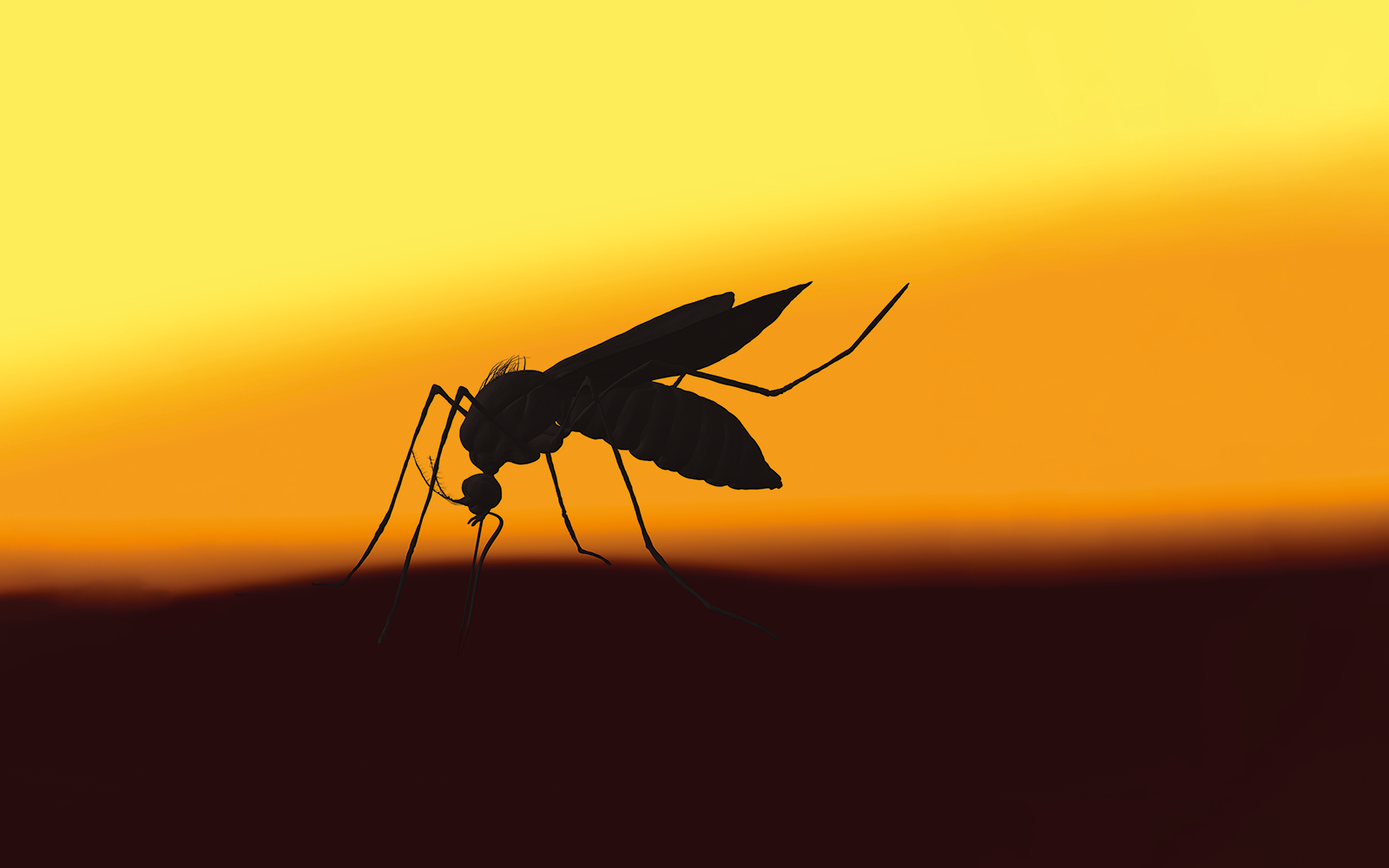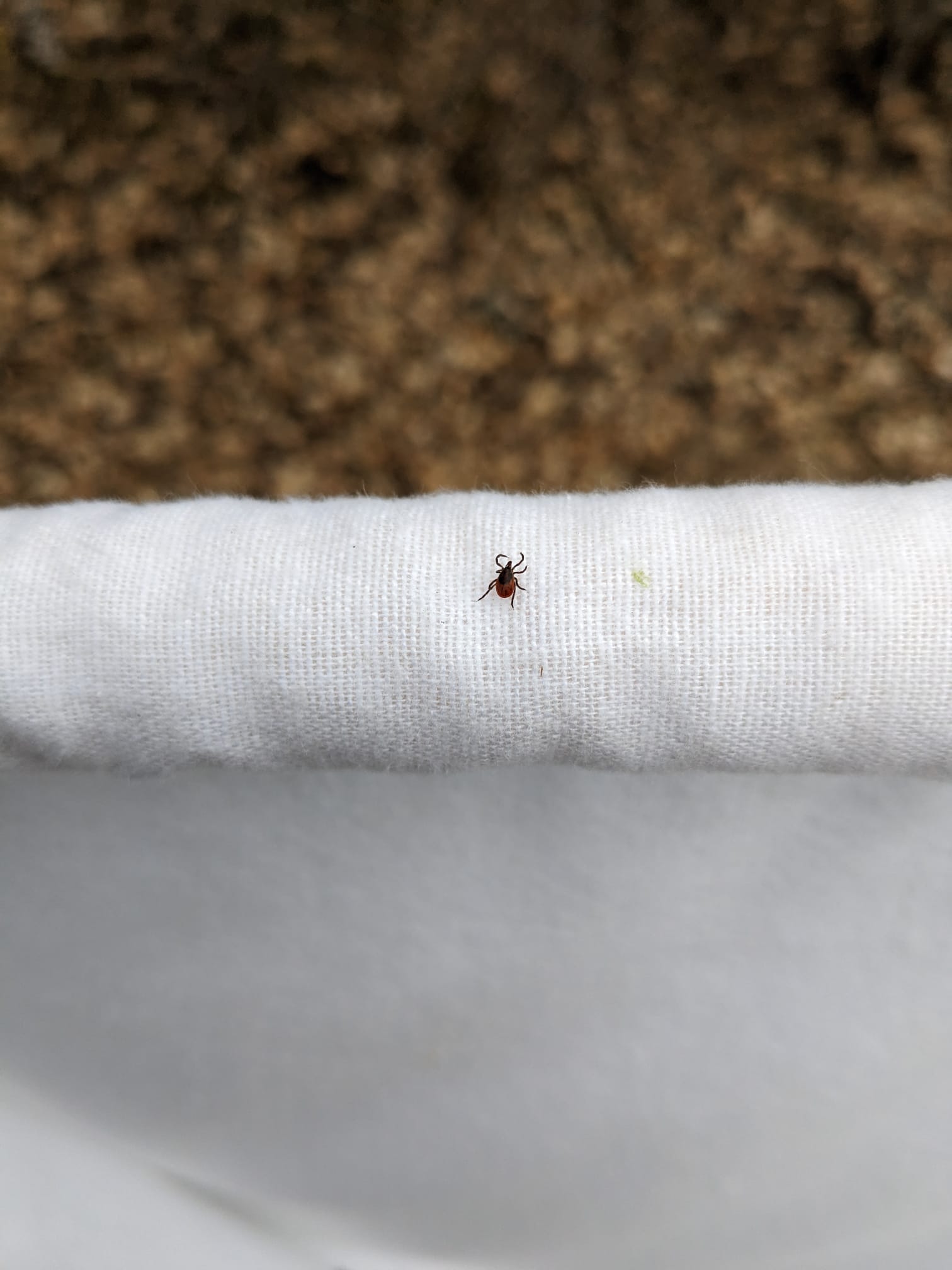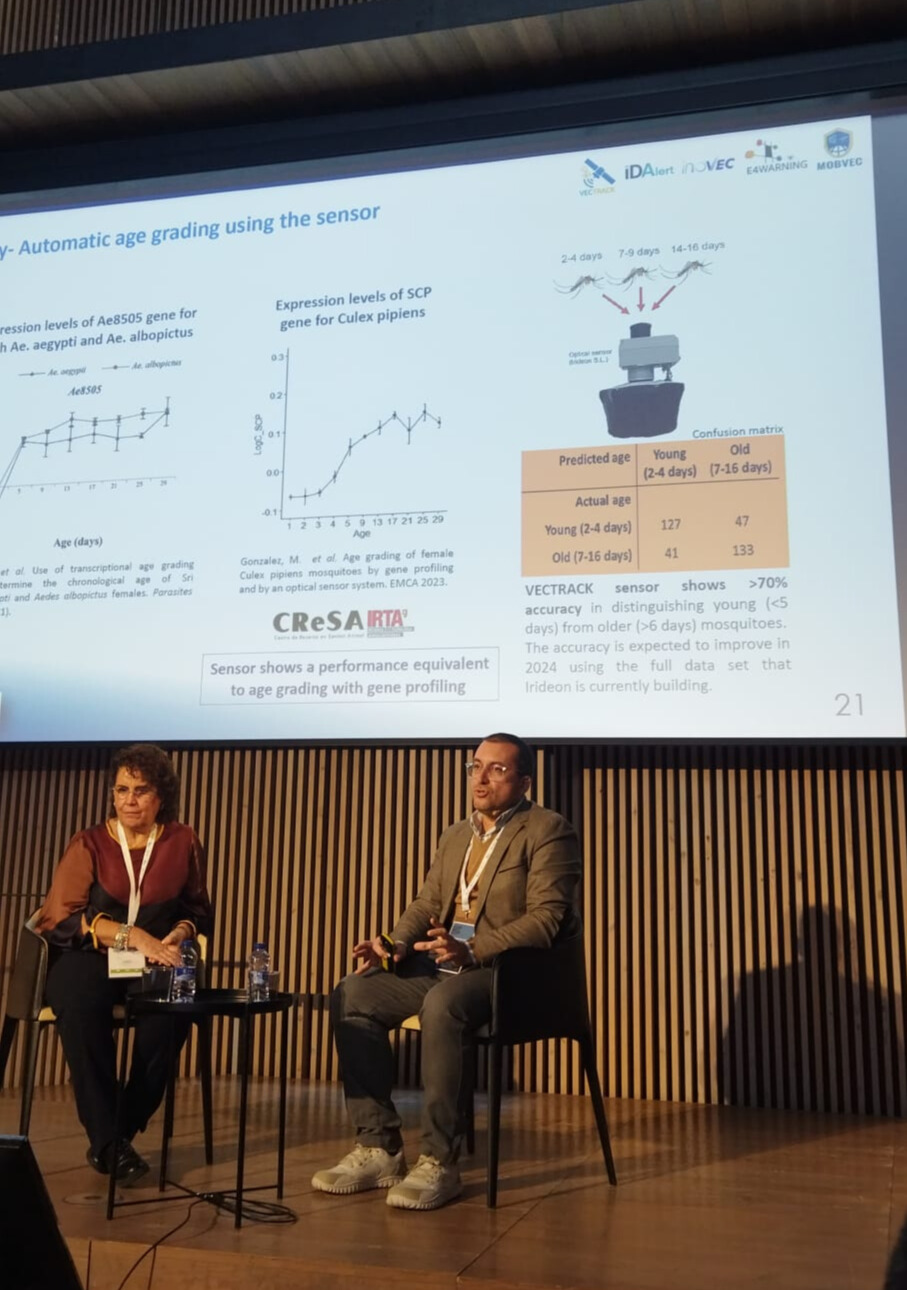How climate change is driving the global spread of disease, and what steps the industry can take.
Rising temperatures and extreme weather events represent a danger to life in their own right, but they’re also fuelling the spread, frequency and severity of outbreaks of disease around the world. In response, climate change is recognised as the greatest threat to human health of the 21st century, according to the World Health Organization (WHO, 2021).
HOW GREAT IS THE RISK?
Around 58% of infectious diseases faced by humanity worldwide have been shown to be impacted by climate hazards, through over 1000 unique pathways (Mora et al, 2022). According to the Intergovernmental Panel on Climate Change (IPCC, 2022), new weather patterns are already facilitating the spread of the following:
WHAT’S FUELLING THE CRISIS?
Vector-borne diseases occur when organisms such as mosquitoes transmit bacteria, viruses and parasites to humans. Climate change has already increased the geographical area in which vectors can find optimum conditions to thrive, and this is only set to grow, bringing diseases to regions and countries for the first time.
The issue was recently addressed at a meeting of the House of Commons Science, Innovation and Technology Select Committee – as part of its inquiry into emerging diseases and learnings from COVID-19 – with experts invited to share their thoughts on which potentially deadly diseases could reach the UK as rising temperatures enable the insects that transmit them to extend their territory further north (UK Parliament, 2023).
Meanwhile, zoonotic diseases, including Lassa fever, are caused by pathogens and parasites that can be transmitted to humans by animals. Deforestation, changes in land use and food and water insecurity due to climate change are bringing people, livestock and wildlife into ever greater contact, increasing the risk of transmission and new diseases emerging.
Waterborne diseases such as cholera are caused by drinking or coming into contact with contaminated water containing bacterium such as Vibrio cholerae, E coli or faeces from an infected person or animal. Both drought and high rainfall can increase the risk of infection, with the former leading to an increased concentration of pathogens in water and the latter leading to contamination of wastewater.
Changes in temperature are also associated with an increase in food-borne diseases, as warmer weather leads to bacteria, such as salmonella, multiplying more quickly, heightening the contamination risk from farm to fork for workers and consumers.
According to the US Centers for Disease Control and Prevention, fungal diseases such as valley fever – a lung infection caused by a fungus living in the soil – are also spreading northwards to areas where the climate previously wouldn’t support fungi growth (CDC, 2021).


THE GREAT DIVIDE
Many of the poorest in the world face the greatest climate-related challenges. A lack of access to clean water and sanitation, good nutrition and healthcare leaves these populations particularly vulnerable to infection.
Employers in these regions might therefore wish to review where their responsibility for the health and safety of employees starts and ends in the face of this growing crisis, and consider the following:
- Providing a daily nutritious meal
- Supplying mosquito nets and other protective measures to be used by a worker at home
- Offering access to basic medical care, including vaccinations and antibiotics
- Establishing a safe water supply in the community as part of an organisation’s corporate social responsibility strategy.
‘Globalisation is expanding our responsibility for workers, their families and communities,’ says Kris Murray, professor of environmental change and health and co-director of the Centre on Climate Change and Planetary Health at the MRC Unit The Gambia, London School of Hygiene and Tropical Medicine.
‘As consumers, we’re already familiar with concepts such as sustainable coffee, and how our purchase decisions impact producers. The same applies for disease, as demand-side drivers are a contributing factor to a range of infectious disease risks in producing countries. It’s a complex web but, ultimately, everyone is connected and potentially implicated.’
A NATURAL SOLUTION
The World Mosquito Program (WMP) breeds mosquitoes that carry the naturally occurring bacteria Wolbachia – which reduces the ability of the Aedes aegypti mosquito to transmit viruses to humans – and releases them into targeted locations. These then breed with the local mosquito population so that, over time, the proportion of mosquitoes in the area carrying Wolbachia becomes high enough for further releases not to be required. As the Wolbachia-positive mosquito population becomes self-sustaining, the approach creates a long-term, cost-effective and entirely natural solution.
First deployed in Queensland, Australia in 2011, the not-for-profit initiative has been so successful that Far North Queensland is now effectively a dengue-free area for the first time in more than 100 years. ‘While the ministry of health and government agencies will ultimately determine where we can release mosquitoes, community involvement is at the heart of everything we do and an area where local organisations and businesses can play a key role in protecting their employees and their families,’ says Kieran Walters, director of global functions and strategy at the WMP.
‘Helping to raise awareness of the project, as a trusted voice in the community, is an invaluable form of support, as is supplying vital equipment, resources and funding.’
New Caledonia is a textbook example of this partnership approach. Energy provider EEC ENGIE used its website, social networks and other communication channels to inform residents about the Wolbachia method. Postal and telecommunications service OPT allowed WMP to use its billboards to display Wolbachia announcements, provide mobile phone cards for staff and negotiate a special rate to distribute project flyers. Sports retailer Decathlon provided backpacks and raincoats to improve working conditions for the field team.
WMP is currently partnering with communities in 13 countries around the world. If your organisation would like to support its work, visit worldmosquitoprogram.org/en/get-involved/contact-us
ON THE OUTSIDE
Outdoor workers also bear the brunt of the risk, both in terms of exposure to the causes of disease and the control methods to manage them.
‘Although employers might be taking the issue of climate change seriously, preventive and protective measures are still lacking, especially for outdoor workers,’ confirms Shouro Dasgupta, environmental economist at the Euro-Mediterranean Center on Climate Change and visiting senior fellow, Grantham Research Institute, London School of Economics.
Pesticides present a particular challenge in extreme heat as an increase in bloodflow and sweat can lead to greater absorption of toxicants. High temperatures may also accelerate the dispersal of pesticides, increasing the density of airborne particles. In hot temperatures, workers might be disinclined to use PPE due to discomfort. Employers may need to source alternative PPE designed specifically for these conditions, and offer more frequent breaks so that employees can recover from wearing it (EU-OSHA, 2023).
However, controlling vectors is key: by eliminating their breeding grounds, removing their food supply and taking pest control measures (using pesticides, rodent traps or innovative new approaches – see A natural solution, page 41), companies are tackling the root cause of the problem.

Kris says: ‘Beyond chemical approaches, many countries are looking into other ways of controlling the epidemiology of disease, such as through species introduction to control disease pest populations (biocontrol), developing new vaccines for known (and potentially as yet unknown) diseases and by manipulating the natural populations of disease-carrying species by introducing harmful genes (for example, that cause sterility or prevent disease transmission).’
And, while some workers will be familiar with the issues already, others will need detailed information, advice and support from the OSH team. The organisation will also need to ‘walk the talk’ (for example, by removing standing water from the property, where mosquitoes like to lay their eggs) and encourage employees to take the same safety measures at home (for example, not storing water in basins).
Providing a protective staff uniform of light-coloured long-sleeved shirts, trousers (to be tucked into socks/footwear) and a hat could be supported by the provision of insect repellent. Advising workers to do a tick inspection after work, and what to do if they find one, is also vital.
Shouro says: ‘Employers also need to be aware that, by altering working hours to protect employees from the hottest part of the day, they may be inadvertently putting them in danger, as earlier in the day and in the evening are when mosquitoes are active and biting.’
FUTURE-PROOFING
The challenges presented by climate change are constantly evolving, as new research leads to greater understanding of its impact.
In this complex arena, OSH professionals need to survey a much wider environment than previously to ensure risk assessments fully reflect the interdependencies between climate change and human health. For example, heavy rainfall can lead to an increased food supply for vectors such as rodents, which transmit hantaviruses, allowing them to breed more, so a currently manageable problem in the working environment could quickly escalate into a major problem.
Identifying areas of weakness in the face of these new challenges and putting robust systems in place is also crucial. The consistent message from disease experts is that preparation is key.

As new diseases appear in countries that are unfamiliar with them, OSH professionals can also take the lead on educating workers – and through them, their local communities – on causes, symptoms and ways to reduce the risk both at work and at home, as well as reinforcing good hygiene practice generally.
Tapping into external information sources is also critical, whether national, regional or community-based.
‘Many countries have started to recognise that the basis of many climate-sensitive disease risks is changing,’ says Kris. ‘This is now being factored into risk assessments and biosecurity strategies (surveillance, predictive modelling, early warning systems and population alert systems) for the emergence and spread of new diseases and the resurgence of diseases that were previously under control.’
Shouro agrees: ‘Early warning systems are key as they can provide time to reposition resources and implement control programmes to prevent adverse health outcomes. This is a key part of our work at IDAlert – a Horizon Europe project – as is looking at how people in different occupations are affected by climate change-driven infectious disease and also mitigation and adaptation options.’
In October 2022, the Joint Office of WHO and World Meteorological Organization launched the first global open-access knowledge platform dedicated to climate and health, ClimaHealth. Its resource library includes tools such as the Global Vector Hub, which is currently developing a real-time, interactive disease and vector information function for communities to access.
Earlier this year, the Wellcome Trust – a global, charitable foundation for health research – announced £22.7m of funding for 24 research projects to develop open-source digital tools, including early warning systems, to respond to the threat of climate-sensitive infectious diseases.
‘Digital technologies, such as numerical models and early warning systems, are some of the most powerful and useful tools available for understanding and potentially mitigating the impacts of climate on infectious diseases,’ says Felipe Colón, Wellcome’s technology lead (Wellcome, 2023).
OSH teams might also want to establish their own tracking system of climate-related disease in the workplace and potential drivers (weather, working hours, time of year, working environment) to identify patterns and possible prevention strategies.
Finally, in the face of these new challenges, an open dialogue with staff is critical to coming up with the best, most effective and – most importantly – feasible solutions to a potentially life-threatening problem.





